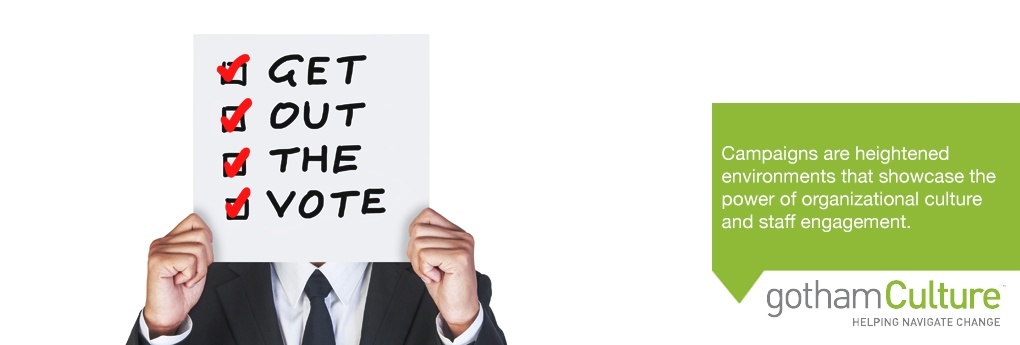gothamCulture’s Samantha Goldman came to us with some incredible organizational experience under her belt: campaign work. Studying employee engagement through that lens became her thesis at The New School and is the basis for her first ever LinkedIn post (congrats Samantha!). Here’s an excerpt:
Political campaign organizations are rarely discussed alongside broader issues of management, leadership and organizational culture. Yet, because of their agility, ability to scale quickly and high level of engaged staff, organizations can learn a lot from them.
To build off these insights, leaders in non-campaign organizations can connect staff to a clear singular mission in personal ways, empower and invest in staff as the front line of the organization and develop a culture focused on learning and adaptability. These best practices can apply to organizations with short-term or long-term endeavors. Even if the endeavor is longer than a campaign cycle, leaders can still build a strong sense of urgency centered on scaling up using key measurable goals and milestones.
Campaigns are heightened environments that showcase the power of organizational culture and staff engagement. Why shouldn’t we deconstruct them to apply best practices in other settings?
(Click here to read Samantha’s full article: Election Cycle Wisdom)


